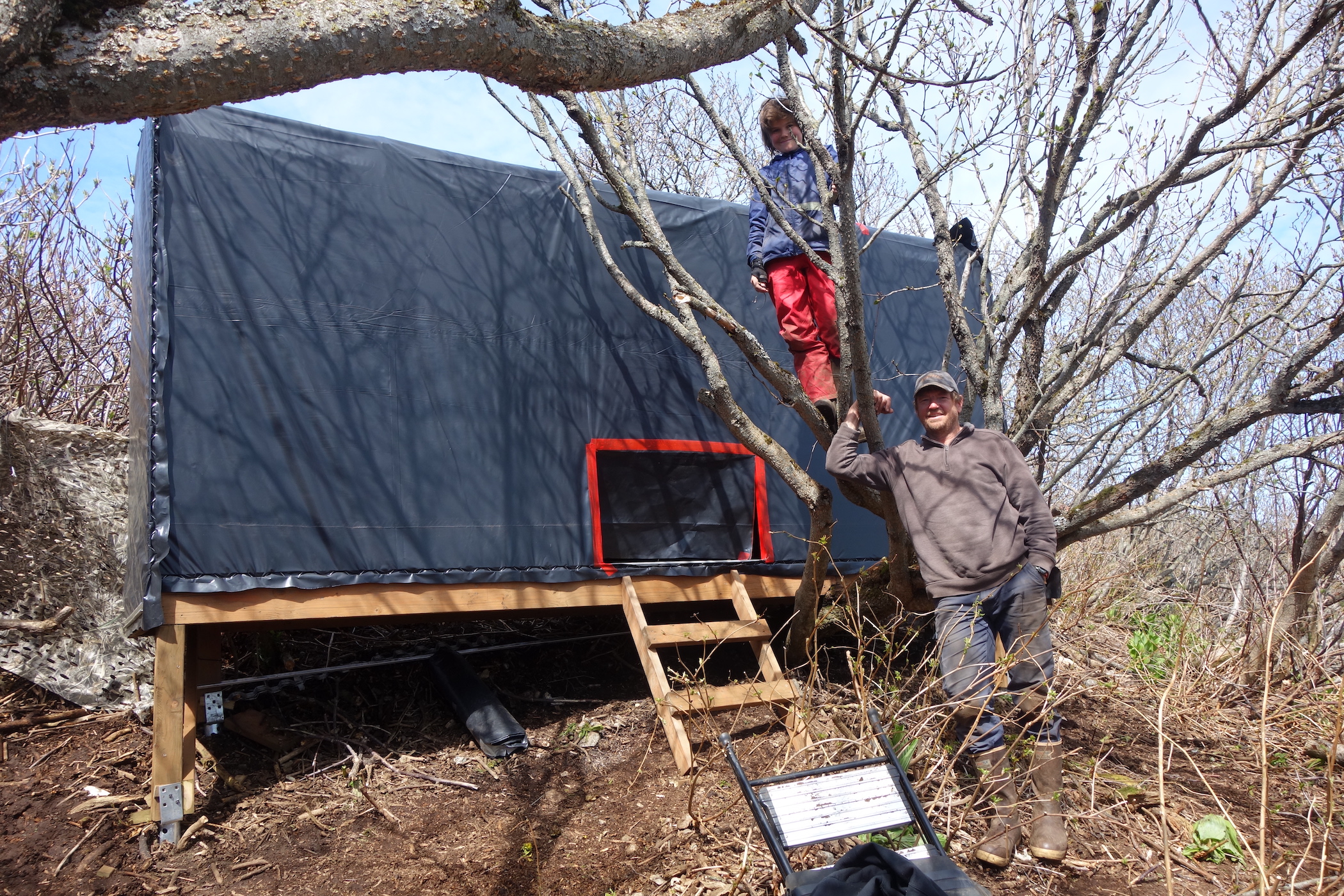My name’s Leif and I am 11 years old. We live in Cordova, but we travel to the west side of Cook Inlet in the summers to do commercial salmon set-netting and also study the seabirds breeding on Chisik and Duck Island. My mom is a biologist, and this is our 5th year helping her study murres, kittiwakes, and puffins. I love doing this, especially measuring the puffin chicks. They are very cute.
Duck Island is really rocky small island that is also really good habitat for seabirds and other wildlife.
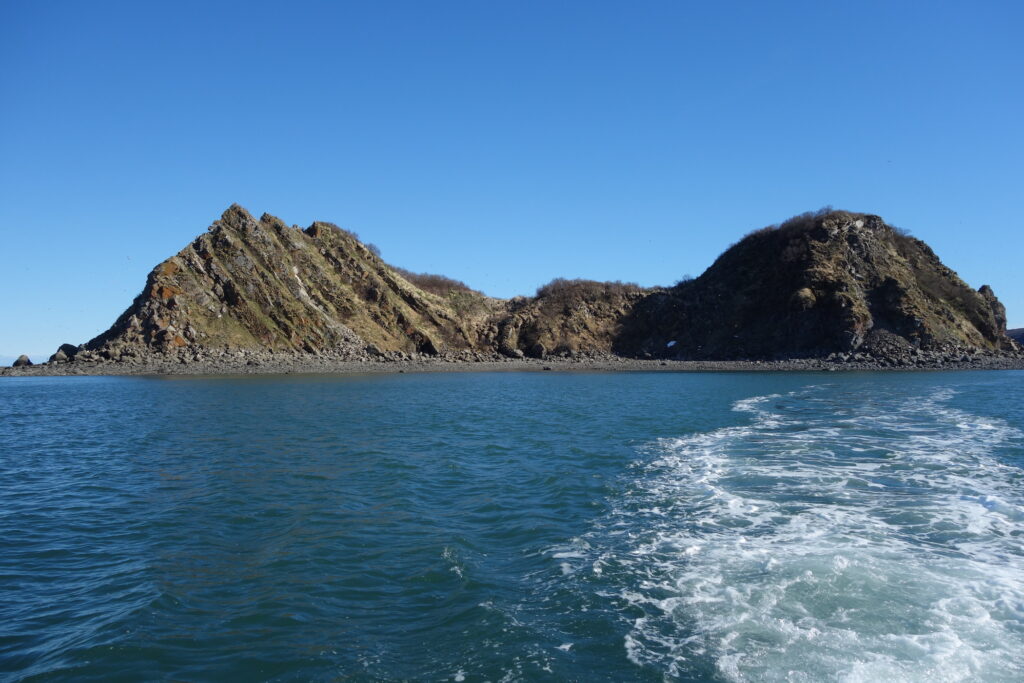
Photo of Duck Island
Last year we camped on Duck Island for four days. We slept in hammocks and the best thing was climbing the trees that are on top of the island.
We caught 50 common murres while we were on the island, and each bird was given four plastic color leg bands and one metal band. Every bird has a unique combination of color bands that is easy to identify.
The below drawing is of bird OM/YRB. That is code for orange over metal on the bird’s left leg, and yellow over red over blue on the bird’s right leg.
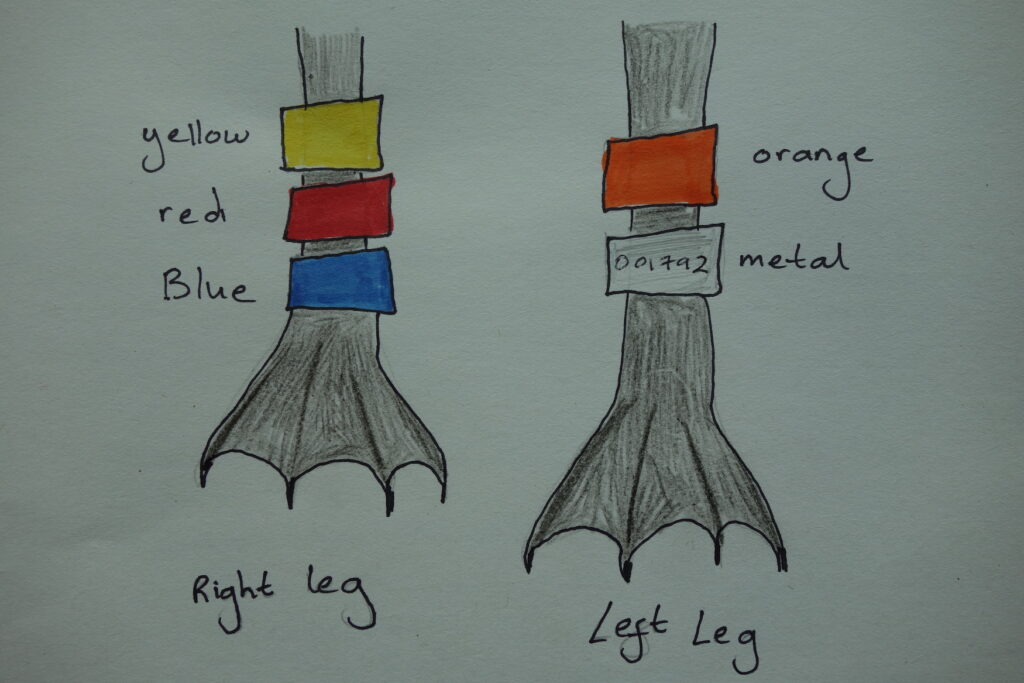
Color-banded murre legs. This drawing is of bird OM/YRB.
It’s a little confusing…. if you look eye to eye with a murre– the leg on your right is the murre’s left leg (the same as if you were looking eye to eye with another person).
I have just taken a week off school, and my mom and I went with Greg (an incredible carpenter who designed and pre-made the blind) to build a bird blind on Duck Island. The blind will be used this summer to keep us dry and hidden while we look for the murres we color banded last year. This will help us understand how many murres survived the winter.
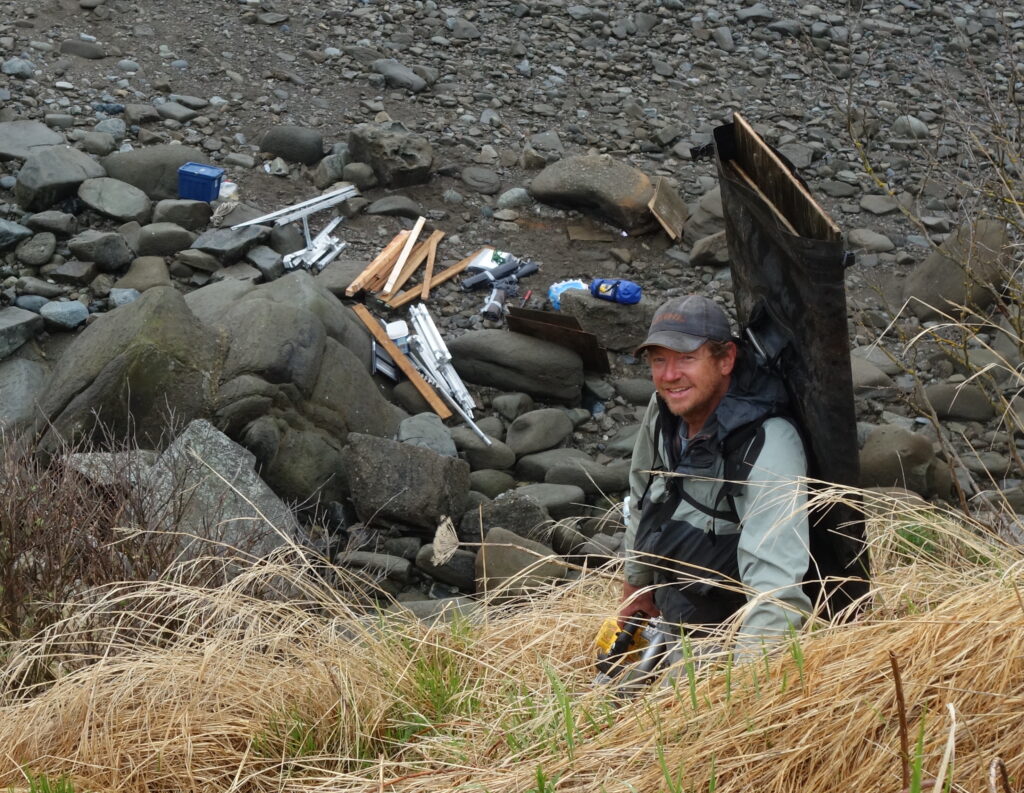
Greg carrying plywood up the hill
Putting a blind up would disturb the birds, so it was important to put up the blind before the birds arrived on the island to breed. Greg designed the blind to be taken down in the winter, and to be as light weight as possible to get up the cliff. It has a wooden floor for a sturdy base to hold a person sitting on a chair, and a metal frame with plastic covering.
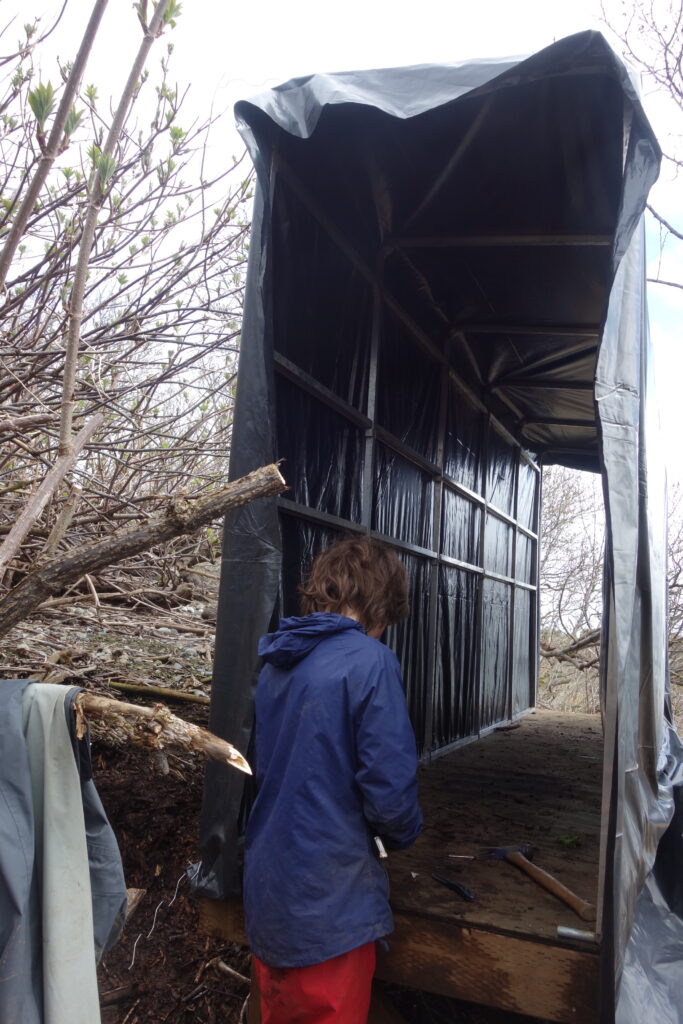
Covering the metal frame of the blind with black plastic
Captain Al and Jordan took us over in their boat from Deep Creek. It was really bumpy and we had waves coming over the bow of the boat on the way home. Al is really nice and he has a very fast boat.
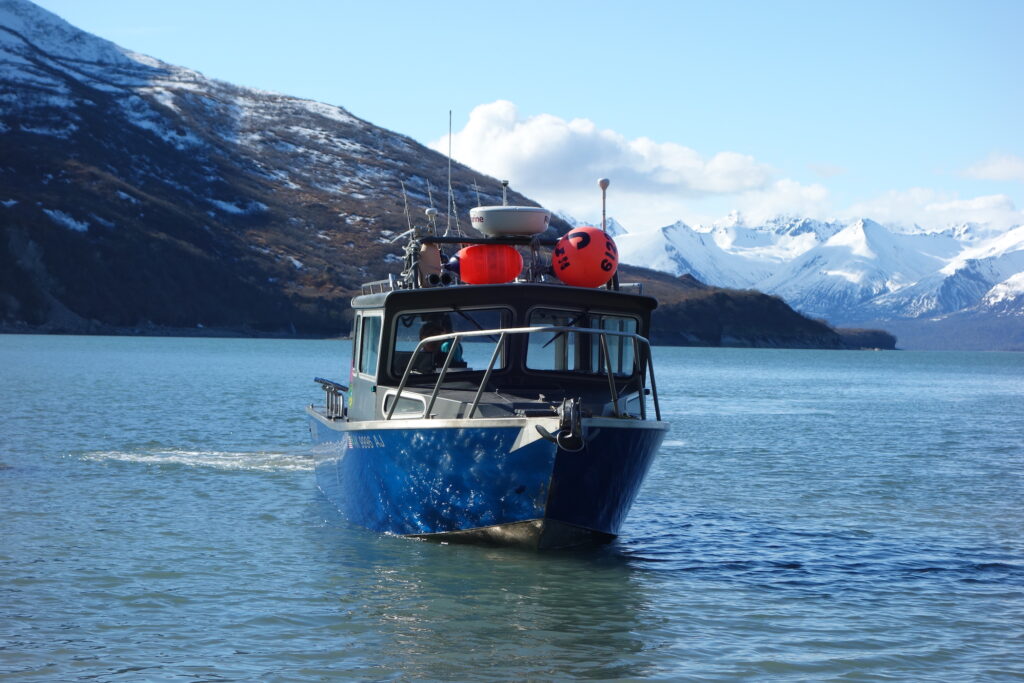
Captain Al’s boat coming to pick us up
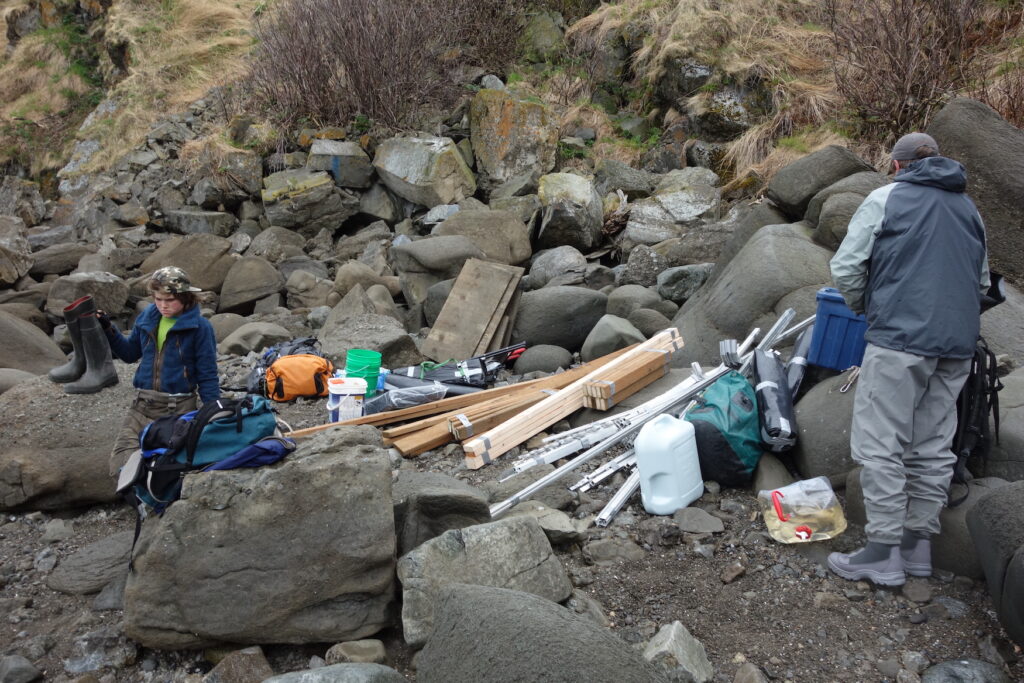
Pile of gear on arrival
There was still some snow on the island when we arrived, and no leaves on the trees. The island felt different with no murres or puffins on the island. It felt a bit strange, but there were lots of sparrows singing. We saw big numbers of murres swimming together off Duck Island, and they were very loud.
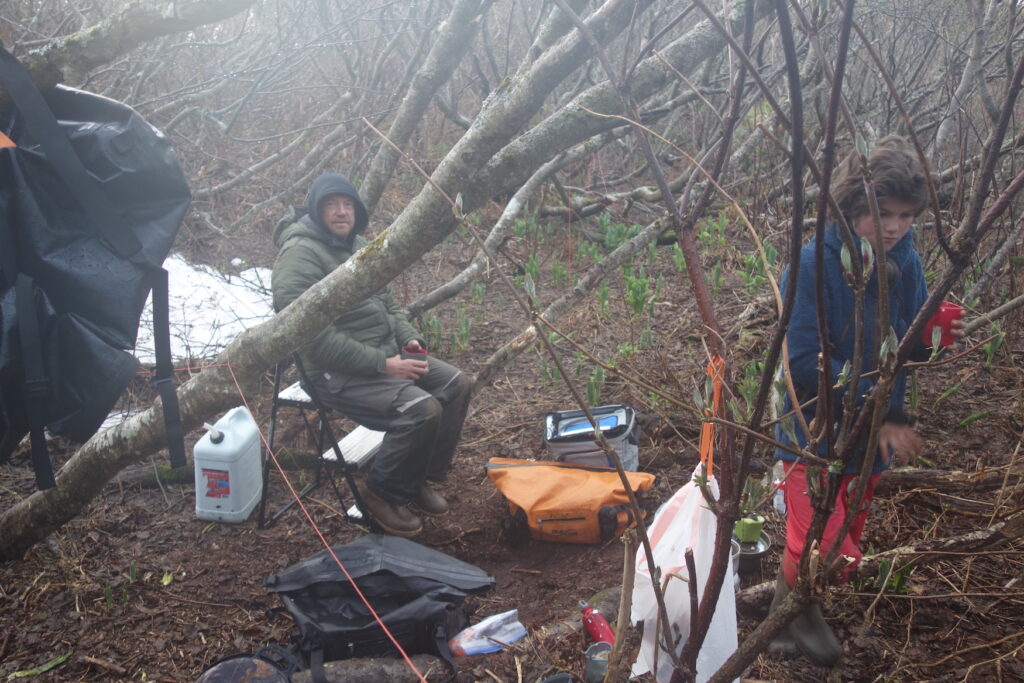
A damp camp in the trees on our first night
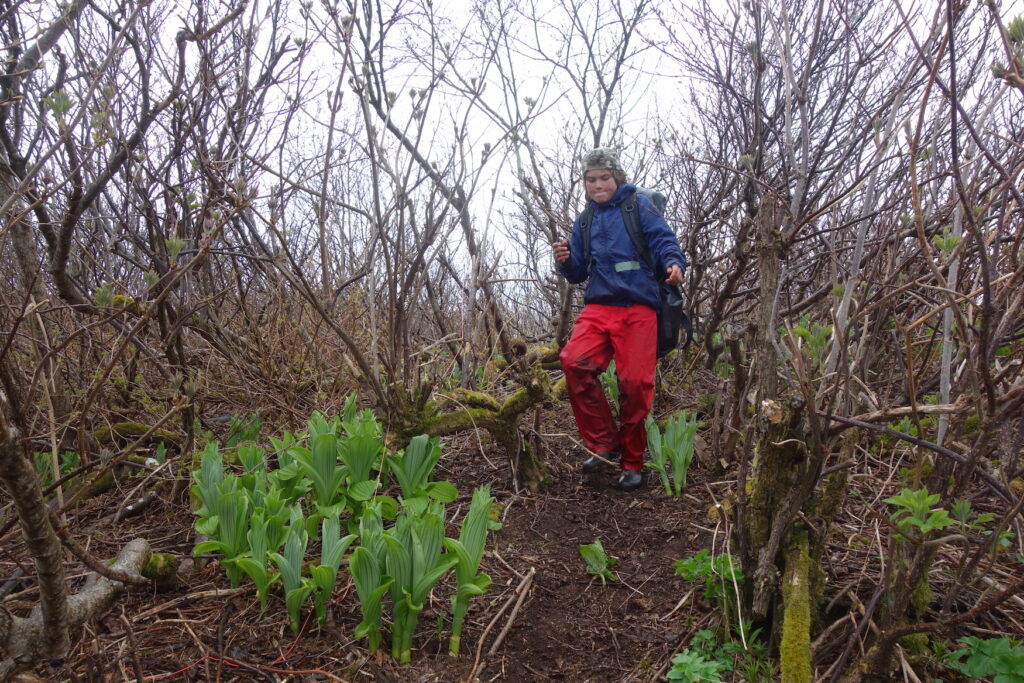
Carrying a full pack of building supplies through the woods
We spent two days on the island building the blind. It was really hard carrying all the building equipment for the blind up to the murre colony at the top of the island.
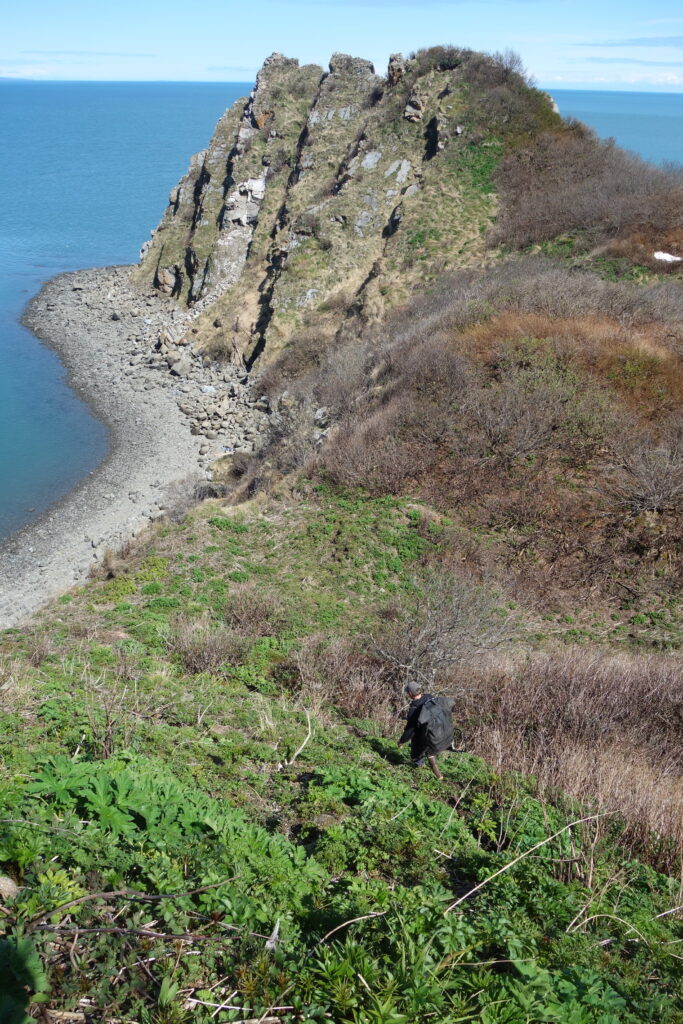
Greg walking down the hill to get another load from the beach
The best thing about the trip was probably seeing all of the puffins arrive just as we were leaving the island.
The worst thing about the trip was hauling all of the gear up the cliff. It was really hard because we had to carry or tug all of the stuff up the steep slopes using ropes and trees for handles! It took us about 8 hours to each do about 7 hauling trips on the first day. We got very tired and dirty.
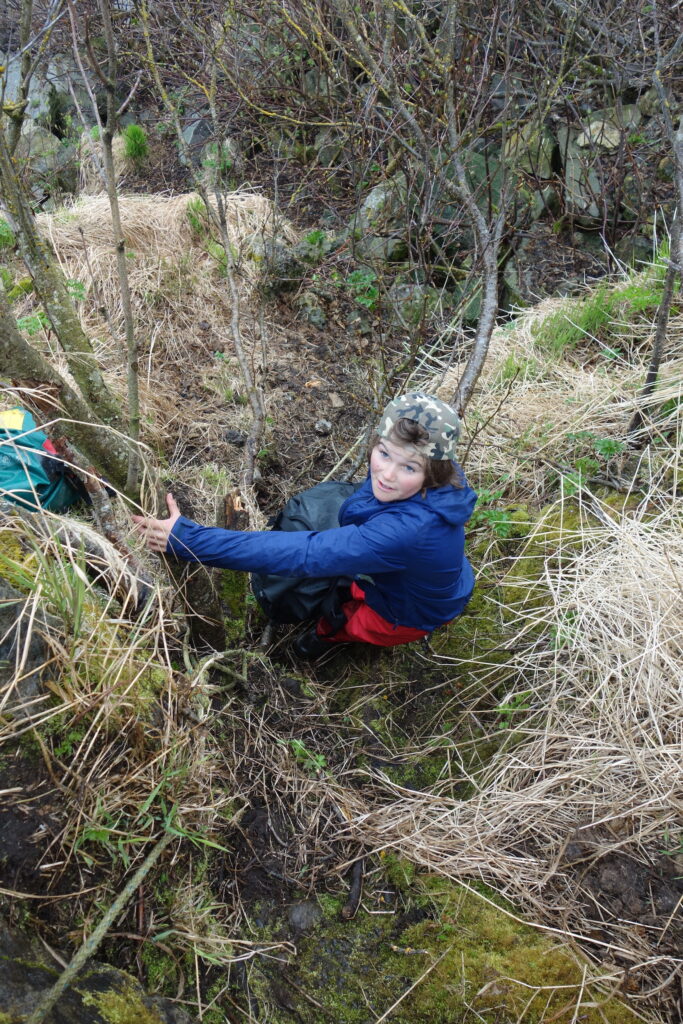
Using ropes to climb the cliff
The finished blind looks great, and we hope the birds will ignore it (and go about their normal behavior).
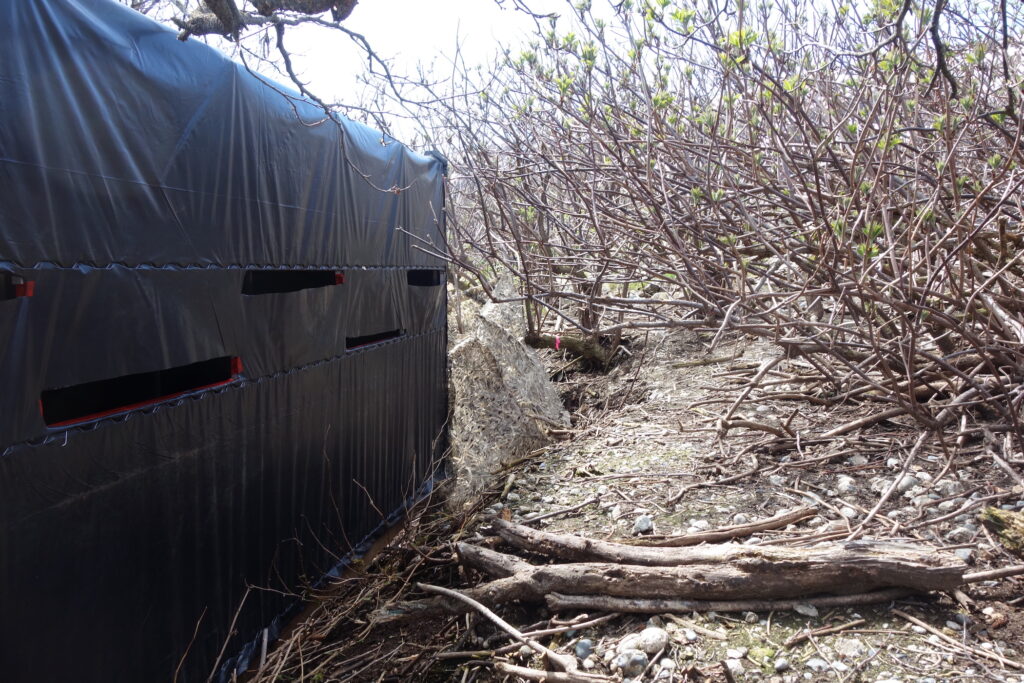
The front of the blind with the windows to view the murres
We will let you know how many of the 2023 color-banded birds we see this summer!

